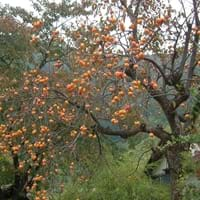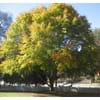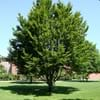Life Span
Perennial
Perennial
Type
Tree
Flowering Plants, Shrubs
Origin
China, Korea
Africa, America, Asia
Types
Fuyu Persimmons
Hachiya Persimmons
Among(Ye mon)
Maru Persimmons
Lockinch, Petite Indigo, White Profusion
Number of Varieties
Not Available
Habitat
Woodlands
Along Railroads, River side, Roadsides
USDA Hardiness Zone
6-10
5-10
Sunset Zone
H1, 6, 7, 8, 9, 12, 14, 15, 16, 18, 19, 20, 21, 22, 23, 24
H1, 2a, 2b, 3a, 3b, 4, 5, 6, 7, 8, 9, 10, 11, 12, 13, 14, 15, 16, 17, 18, 19, 20, 21, 22, 23, 24
Habit
Pyramidal
Arching/Fountain-shaped
Flower Color
Light Yellow
Blue, Pink, Purple, Red, White
Flower Color Modifier
Bicolor
Not Available
Fruit Color
Orange
Not Available
Leaf Color in Spring
Green
Gray Green
Leaf Color in Summer
Green
Gray Green, Light Green
Leaf Color in Fall
Yellow, Burgundy, Orange Red
Gray Green, Light Green, Yellow green
Leaf Color in Winter
Not Available
Not Available
Leaf Shape
Elliptic
Egg-shaped
Plant Season
Summer, Fall, Winter
Fall, Spring, Summer, Winter
Sunlight
Full Sun, Partial Sun
Full Sun, Part sun, Partial shade
Type of Soil
Clay, Loam
Loamy, Sandy, Well drained
The pH of Soil
Acidic, Neutral
Neutral, Slightly Acidic, Slightly Alkaline
Soil Drainage
Well drained
Well drained
Tolerances
Not Available
Drought, Pollution, Salt, Soil Compaction
Where to Plant?
Ground
Ground, Pot
How to Plant?
Seedlings
Seedlings, Stem Planting, Transplanting
Plant Maintenance
Medium
Medium
Watering Requirements
Do not water excessively, Do not water frequently, Prefer drip-irrigation instead of Over-head watering
Form a Soil ring to water efficiently, Water Deeply, Water twice a day in the initial period
In Summer
Lots of watering
Lots of watering
In Spring
Moderate
Moderate
In Winter
Average Water
Average Water
Soil pH
Acidic, Neutral
Neutral, Slightly Acidic, Slightly Alkaline
Soil Type
Clay, Loam
Loamy, Sandy, Well drained
Soil Drainage Capacity
Well drained
Well drained
Sun Exposure
Full Sun, Partial Sun
Full Sun, Part sun, Partial shade
Pruning
Remove damaged leaves, Remove dead branches, Remove dead leaves
Cut or pinch the stems, Prune for shortening long shoots, Prune if you want to improve plant shape, Prune ocassionally, Remove damaged leaves, Remove dead or diseased plant parts, Remove deadheads, Remove shoots
Fertilizers
All-Purpose Liquid Fertilizer, Apply N-P-K
All-Purpose Liquid Fertilizer
Pests and Diseases
Caterpillars, Mealybugs, Nematodes, Red blotch
Downy mildew, Leaf spot, Spider mites
Plant Tolerance
Drought, Full Sun, Variety of soil types
Drought
Flowers
Insignificant
Yes
Flower Petal Number
Single
Single
Foliage Texture
Medium
Medium
Foliage Sheen
Glossy
Matte
Self-Sowing
Not Available
Yes
Attracts
Birds
Butterflies, Hummingbirds
Allergy
Not Available
Vomiting
Aesthetic Uses
Bonsai
Showy Purposes
Beauty Benefits
Not Available
Not Available
Environmental Uses
Air purification
Air purification
Medicinal Uses
Anthelmintic, Antitussive, Antivinous, Appetizer, Astringent, Demulcent, Expectorant, Laxative
Not Available
Part of Plant Used
Fruits
Flowers, Leaves
Other Uses
Cosmetics
Showy Purposes, Used as Ornamental plant
Used As Indoor Plant
No
No
Used As Outdoor Plant
Yes
Yes
Garden Design
Edible, Fruit / Fruit Tree, Topiary / Bonsai / Espalier
Edging, Feature Plant, Foundation
Botanical Name
DIOSPYROS kaki 'Hongsi'
Buddleia davidii
Common Name
Asian Persimmon, Hongsi Persimmon, Japanese Persimmon, Kaki
Butterfly Bush, Summer Lilac, Butterflybush
In Hindi
Japanese Persimmon
Butterfly Bush
In German
Japanese Persimmon
Schmetterlingsstrauch
In French
Persimmon japonais
buisson de papillon
In Spanish
El caqui japonés
arbusto de las mariposas
In Greek
Ιαπωνικά Λωτός
Butterfly Μπους
In Portuguese
Persimmon japonês
arbusto de borboleta
In Polish
japoński Persimmon
Butterfly Bush
In Latin
Persimmon Italica
papilio rubo
Phylum
Tracheophyta
Spermatophyta
Class
Magnoliopsida
Dicotyledonae
Family
Ebenaceae
Scrophulariaceae
Clade
Angiosperms, Asterids, Eudicots
Angiosperms, Asterids, Eudicots
Tribe
Not Available
Not Available
Subfamily
Not Available
Not Available
Importance of Japanese Persimmon and Butterfly Bush
Want to have the most appropriate plant for your garden? You might want to know the importance of Japanese Persimmon and Butterfly Bush. Basically, these two plants vary in many aspects. Compare Japanese Persimmon and Butterfly Bush as they differ in many characteristics such as their life, care, benefits, facts, etc. Every gardener must at least have the slightest clue about the plants he wants to plant in his garden. Compare their benefits, which differ in many ways like facts and uses. The medicinal use of Japanese Persimmon is Anthelmintic, Antitussive, Antivinous, Appetizer, Astringent, Demulcent, Expectorant and Laxative whereas of Butterfly Bush is Not Available. Japanese Persimmon has beauty benefits as follows: Not Available while Butterfly Bush has beauty benefits as follows: Not Available.
Compare Facts of Japanese Persimmon vs Butterfly Bush
How to choose the best garden plant for your garden depending upon its facts? Here garden plant comparison will help you to solve this query. Compare the facts of Japanese Persimmon vs Butterfly Bush and know which one to choose. As garden plants have benefits and other uses, allergy is also a major drawback of plants for some people. Allergic reactions of Japanese Persimmon are Not Available whereas of Butterfly Bush have Vomiting respectively. Having a fruit bearing plant in your garden can be a plus point of your garden. Japanese Persimmon has showy fruits and Butterfly Bush has no showy fruits. Also Japanese Persimmon is not flowering and Butterfly Bush is flowering. You can compare Japanese Persimmon and Butterfly Bush facts and facts of other plants too.





